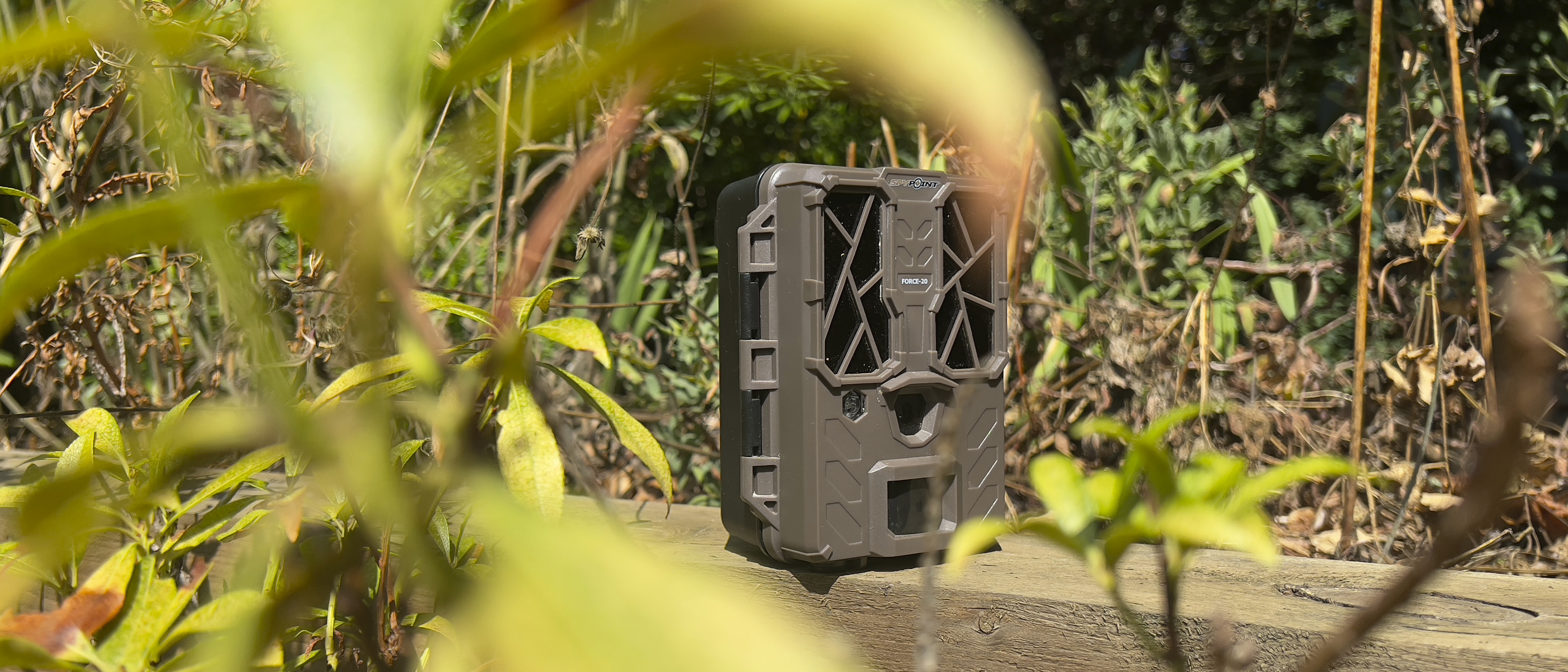Digital Camera World Verdict
This entry level camera is a great place to start for the trail camera novice as it’s far cheaper than some of its Spypoint siblings. The 720 HD definition clips may lack the impact of full 1080 HD but they still look fine on social media feeds. The basic LCD screen is easy to navigate when you set up the camera, then you can leave it to capture the activities of your garden’s nocturnal visitors.
Pros
- +
Simple to set up and deploy
- +
Clear colour and monochrome footage
- +
Good value for money
Cons
- -
Smaller HD definition
Why you can trust Digital Camera World
From its packaging and branding the Spypoint Force-20 looks like a trail camera that’s designed specifically to let a hunter discover the habits and activities of their prey so that they can track it down. The ‘O’ in the Spypoint logo is even shaped like the cross-hairs of a rifle.
However, most of the readers of this review will not be game hunters, and there is plenty of non-lethal fun that you can have with the Force-20. You can use this motion-sensitive infrared trail camera to discover and document what type of animals visit your garden in the dead of night. You may capture clips and stills of foxes, hedgehogs and maybe even a badger or two depending on your location in the world (in this instance, the UK).
You can also use the Spypoint Force-20 to discover when your cat decides to go for a nocturnal wander and see and what time it returns home, learning new things about your feline family member. You can even use the Force-20 as an outdoor security camera, although that's not what it was designed for. By placing it in a flower bed or patch of vegetation it will discreetly record any visitors to your house while you’re on vacation.
The best trail cameras ideally have a decent battery life, reliable trigger and offer decent – if not amazing – stills and video quality. The Spypoint Force-20 ticks many of these boxes, and it's cheaper than the Spypoint Solar Dark – largely because it lacks the solar power pack and takes AA batteries. But let's see how it handles and performs in real-world use.
Spypoint Force-20 specifications
Dimensions: 12.7 cm x 9.6 cm x 5.1 cm
Screen: 1.5” LCD
External memory: SD card
Photo Resolution: 20 MP
Video definition: HD 720
Motion sensor: Infrared
Detection range: 21 m
Trigger speed: 0.7 sec
Power: 8 alkaline AA batteries (not included)
Spypoint Force-20 features
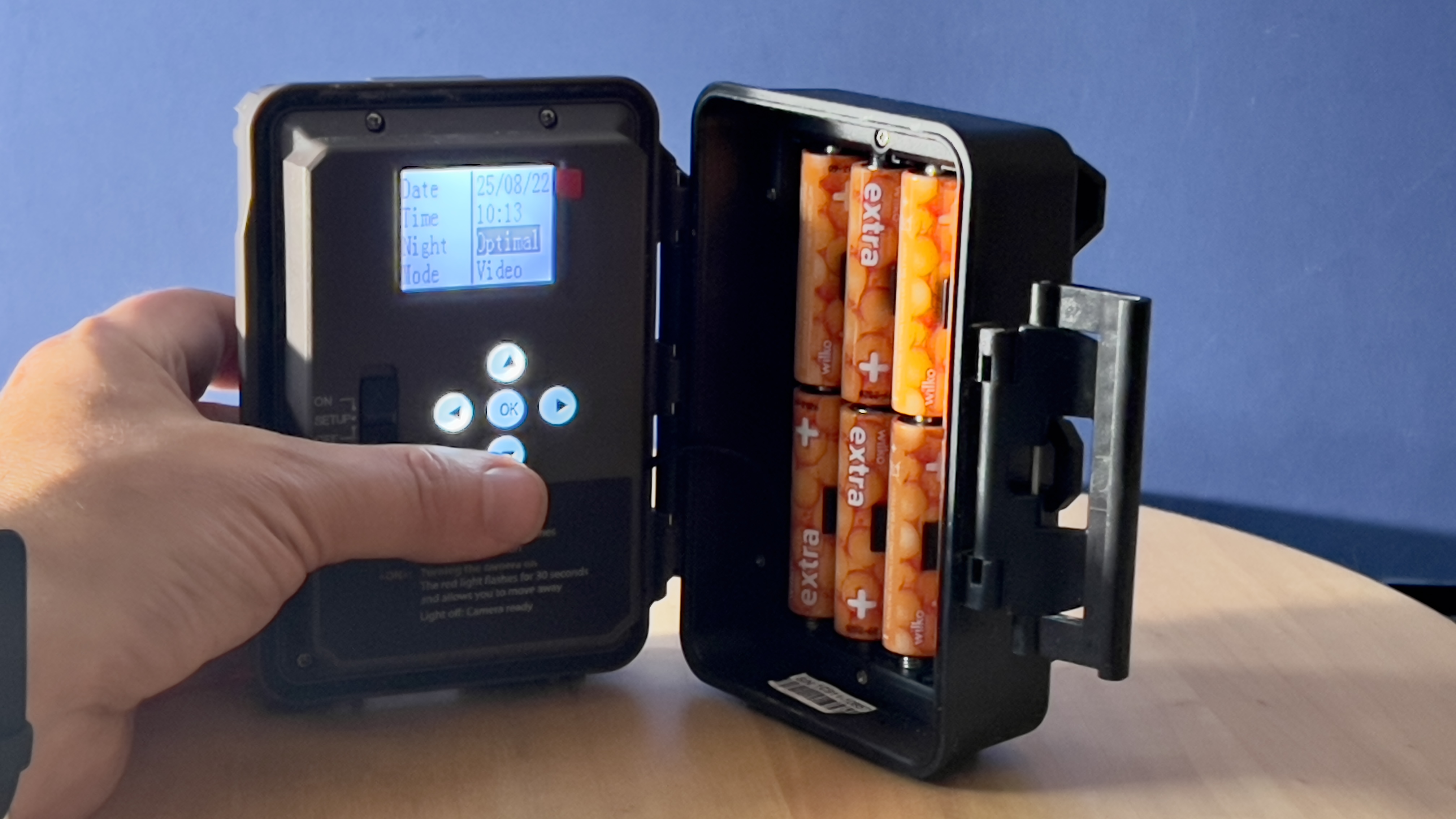
Like other trail cameras in the Spypoint line the Force-20 has a water-resistant casing that enables the camera to shoot in all sorts of weather conditions. Indeed during our test shoot we had some heavy rain, but the internal batteries and memory card where completely protected. The camera’s plastic casing isn’t adorned with the traditional camouflage patterning of other Spypoint models (such as the Solar-Dark) but its plain earthy brown coloring won’t stand out enough to scare off any animals that pass it by.
The Force-20 has two banks of LED lights (84 in total) to help it illuminate animals in low light conditions. At night the LED illuminated infrared footage is a classic black and white while the clips and stills revert to color during daylight hours. A motion sensor triggers the recording of videos or photos (or both) when an animal wanders into shot. A monochrome LCD screen enables you to set up various shooting modes (and adjust the sensitivity of the motion sensor so that you don’t end up capturing clips of wind-blown branches).
The Force-20 ships with a strap so if you are a wildlife photographer you can carry it as part of your kit. For most of us, the carry strap will probably stay in the box as the camera won’t need to be transported further than the outer reaches of a back garden. There’s also a handy tripod thread at the base of the camera so you can mount and angle the camera for the best view of your subjects.
Spypoint Force-20 Build & handling
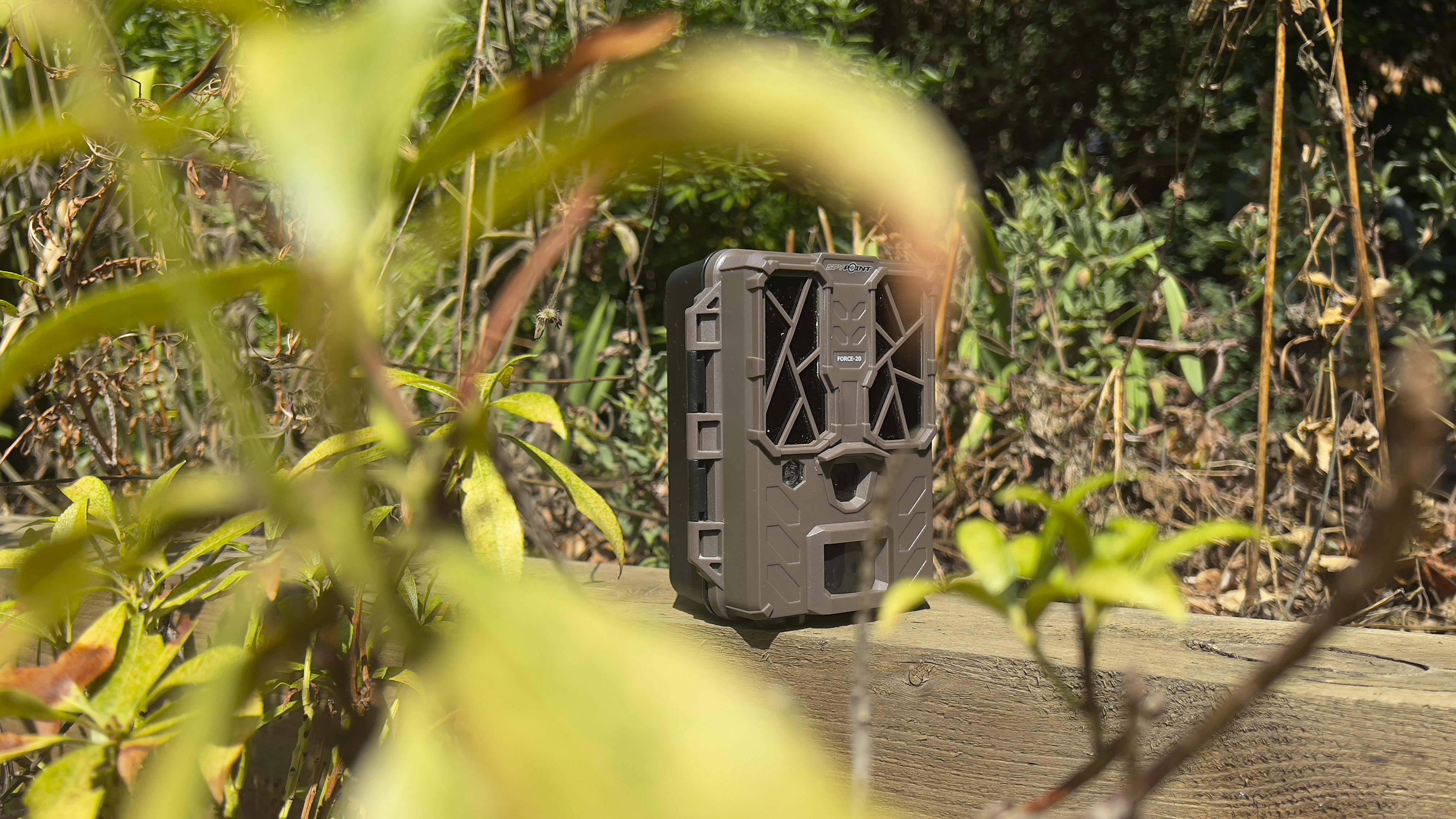
In build the the Force-20 feels like most other trail cameras in the Spypoint range. Due to its plastic body it’s light and easy to carry. A sturdy clip enables you to open the water-resistant housing and access the greyscale LCD menu. Here you can use the buttons to experiment with different shooting settings and the delay between capturing clips. If the delay is set to Instant then you will fill up the memory card more quickly.
The Force-20 ships with a branded Spypoint 16 GB SD card and card reader. The card has a speed value of Class 10 which is fast enough to write HD video files. Disappointingly you can’t capture the action as full 1080 HD clips. The Force-20 only captures the 720 HD size, but that’s adequate if you only need to share the files via social media to be viewed on a smartphone. The stills are a larger 20 MP but they may not feature the animal in the best position in the frame.
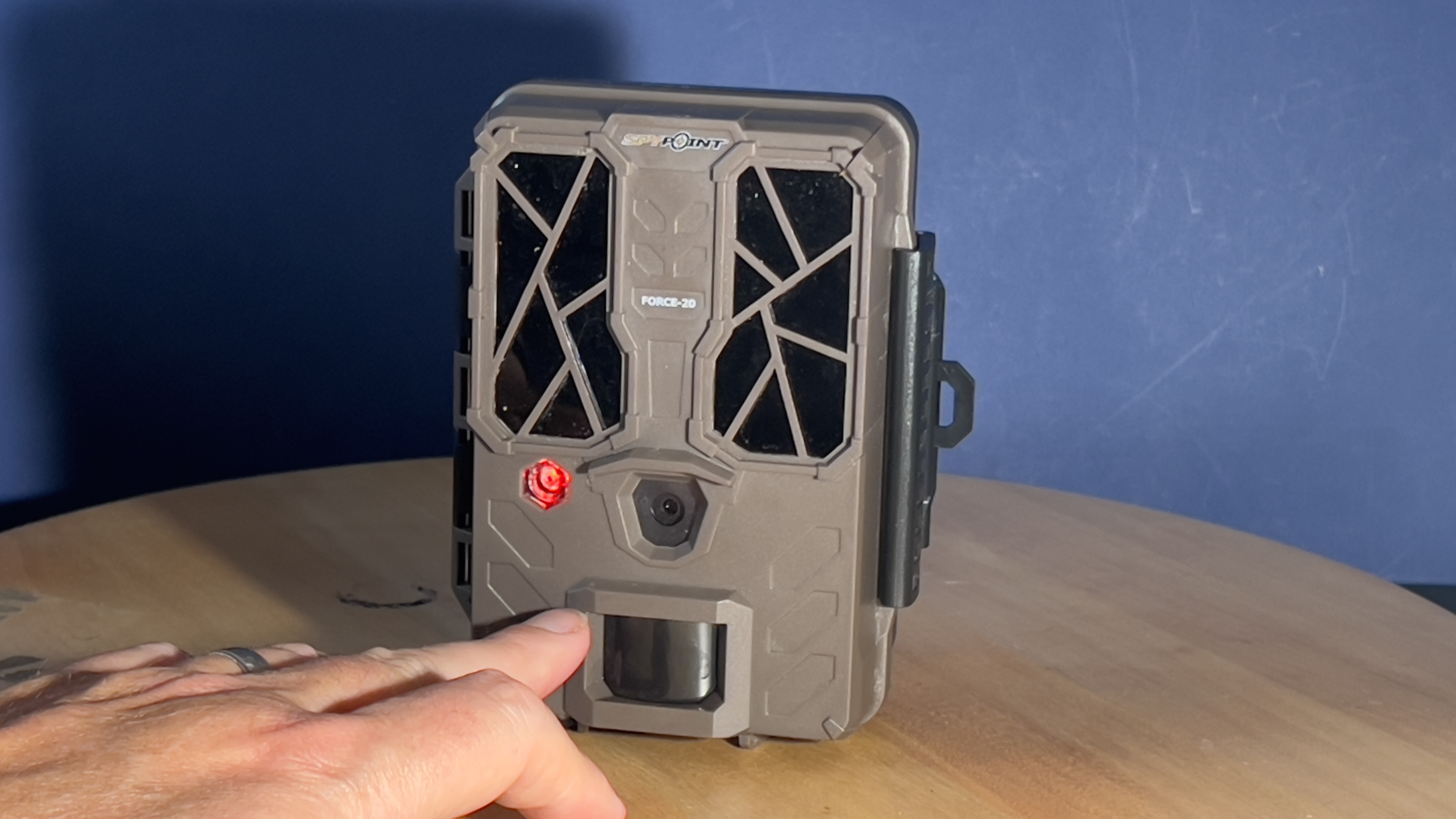
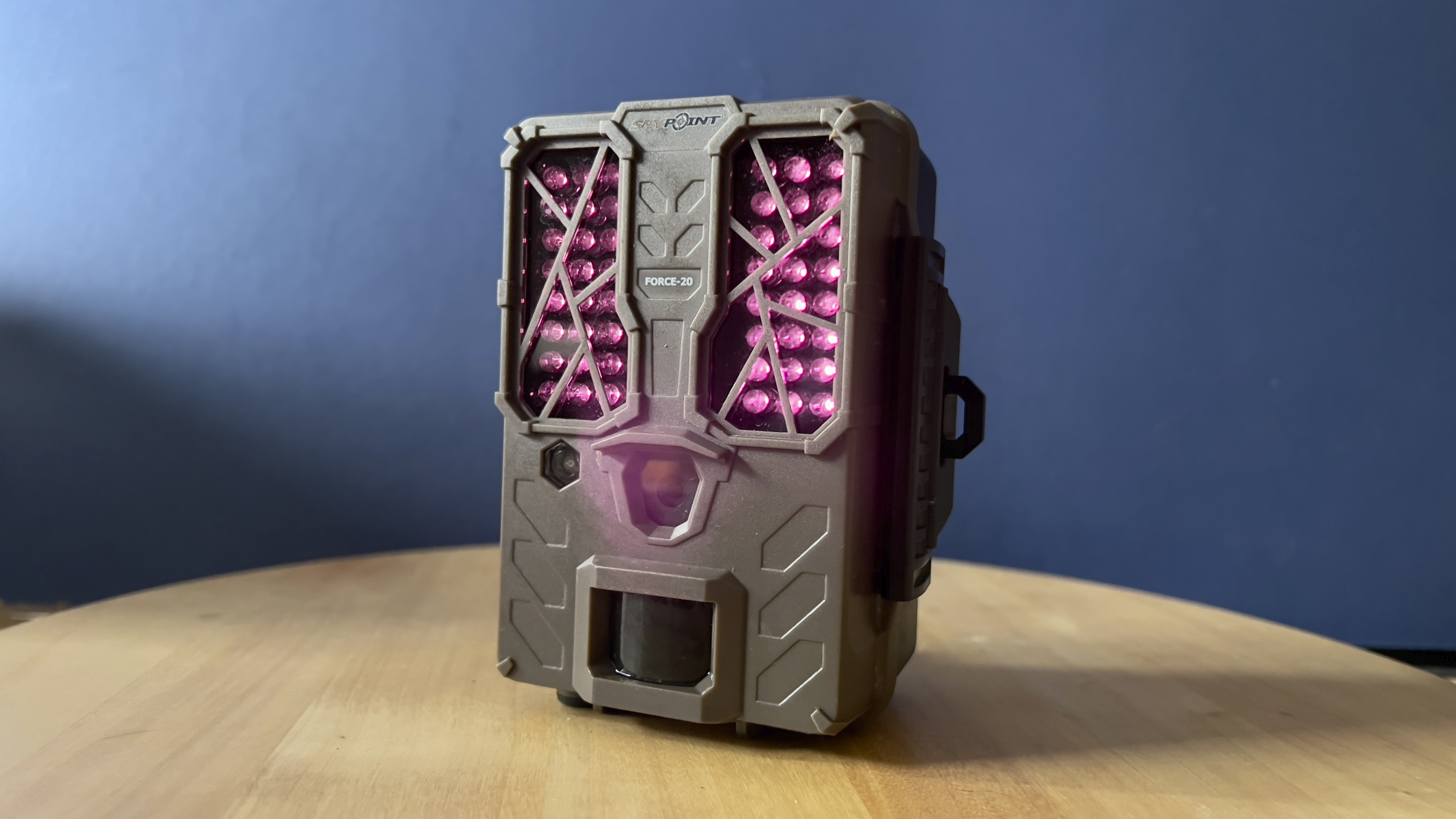
Spypoint Force-20 Hands-on
Spypoint Force-20 Performance
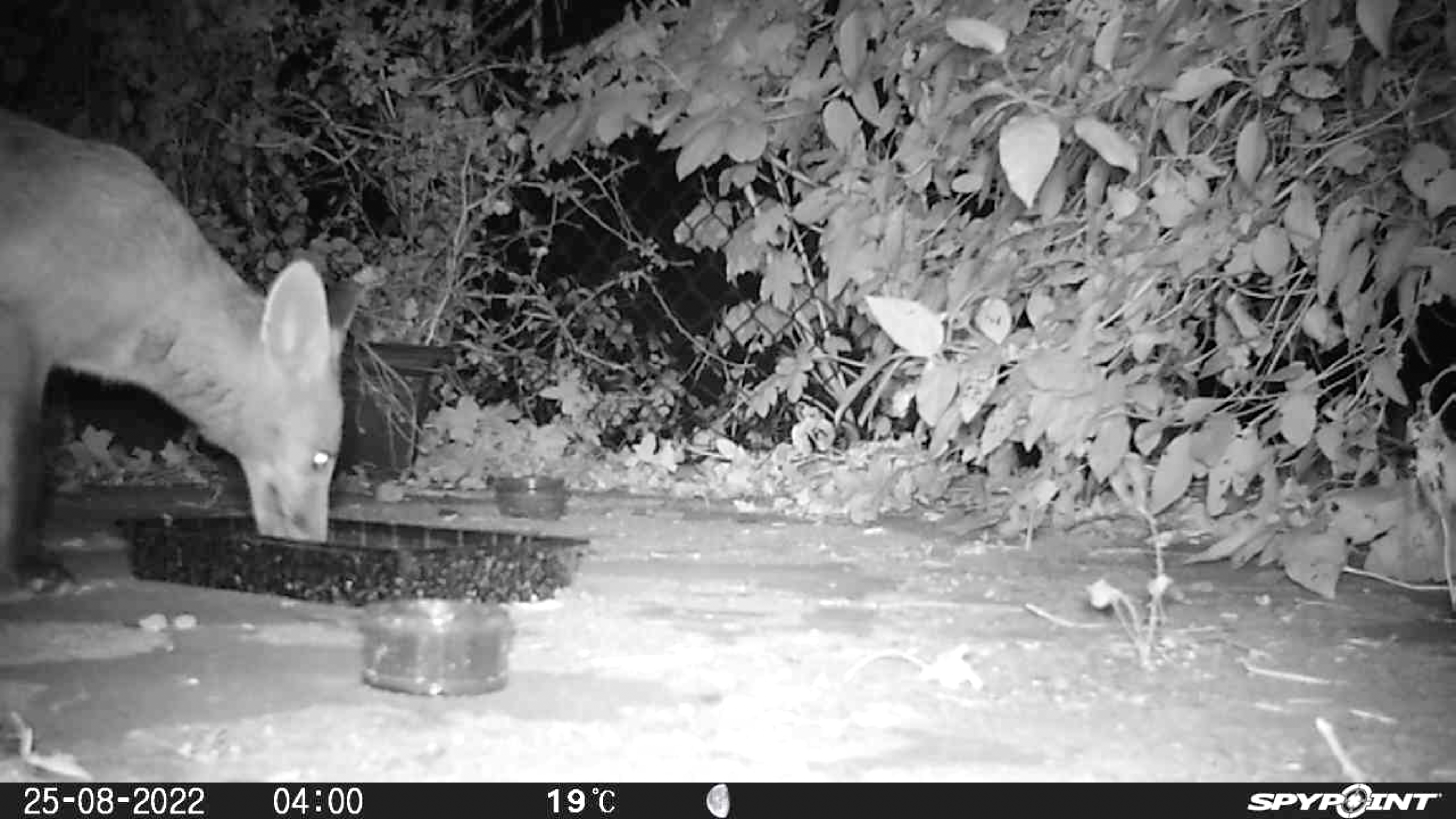
For a budget entry-level trail camera we were impressed that the quality of the footage captured on the Force-20 was better than that recorded by the more expensive Solar-Dark. The footage from the Solar-Dark was often over-exposed when the subject got too close to the LEDs. The Force-20 managed to capture more detail in closer subjects without over-exposing them. The exposure of the Force-20 footage was nice and constant too, unlike the fluctuating exposure of the Solar-Dark.
Unlike the color screen of its more expensive Solar-Dark cousin you can’t play back recorded footage of on the Force-20’s monochrome screen. You need to pop the SD card into the card reader and via the footage on your PC. You’ll also need to keep the Force-20 supplied with batteries as it lacks the Solar-Dark’s solar panel and internal battery.
Fortunately the Force-20 also lacks the Solar-Dark’s hefty price-tag (it’s early half the price), making it an attractive choice for those new to trail cameras. One nice touch is the inclusion of data on the footage. You can see the time an event occurred, an icon shows you the current phase of the moon and you can discover the temperature in Centigrade or Fahrenheit (depending on the menu setting that you choose).
Spypoint Force-20 Verdict
Despite its low budget price tag and limited choice of menu settings the Force-20 enables you to capture decent photos and clips of animals by night and day. Once you’ve chosen the shooting mode its a simple case of turning it on, placing it in a suitable location and then waiting overnight to see clips of animals in action (check out our accompanying video to see examples – such as foxes fighting!) This entry level device is an ideal choice for your first trail camera and it won’t blow your budget.
If you're interested in wildlife watching, then you also might like our guide to the best portable hides for wildlife photography, plus binoculars for spotting faraway subjects. You can also get cellular trail cameras, which will help you to keep track of subjects from your smartphone.
George has been freelancing as a photo fixing and creative tutorial writer since 2002, working for award winning titles such as Digital Camera, PhotoPlus, N-Photo and Practical Photoshop. He's expert in communicating the ins and outs of Photoshop and Lightroom, as well as producing video production tutorials on Final Cut Pro and iMovie for magazines such as iCreate and Mac Format. He also produces regular and exclusive Photoshop CC tutorials for his YouTube channel.
